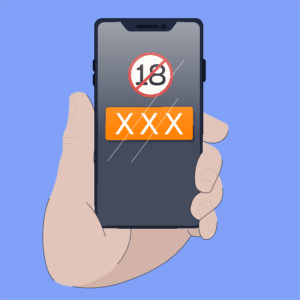Safer Internet Day: How to keep your child safe online


Safer Internet Day
With a reported spike in child abuse imagery appearing online in 2021, it’s vital that adults ensure they are doing everything they can to safeguard their children effectively when using the internet.
In line with Safer Internet Day on 8th February 2022, Claire Watts, a safeguard training expert at leading training platform, High Speed Training, has provided some insight on how to identify when a child might be engaging in unsafe content online:
1. They’re constantly using their phone
Advertisement
Hide AdAdvertisement
Hide Ad“According to child safety experts, the most common age for a child to get a phone is between 12-13, in the UK this ties in with when a child is in the early years of high school, and perhaps has started making their own way to school and being more independent. Having a phone at this age allows parents to keep in touch and children to make any necessary calls.


“However, the concern starts when a child becomes too attached to their phone. If you’ve noticed they’re aimlessly scrolling when they’re supposed to be sleeping, or seeing constant use of their device, it may be worth having a conversation with them about this.
Whilst they may not be engaging in dangerous activity online, overuse or addiction to devices can have a negative impact on wellbeing, so it’s worth addressing.”
2. You’ve noticed changes in their behaviour
“Whether they’re being more withdrawn from conversations, or perhaps being secretive about who they’re speaking to or where they’re going, these types of behavioural changes could be the impact of feeling pressured or uncomfortable with something.
Advertisement
Hide AdAdvertisement
Hide AdIt’s important to let the child know that whatever it is that’s bothering them, you’re not here to judge or accuse, you’re here to help.
“Further behavioural changes to look out for would be displaying signs of being more worried, anxious or distracted than usual.”
3. They display knowledge of inappropriate language or content
“If you hear children discussing topics that they’re too young to be discussing, using language that you’re unfamiliar with or engaging with content that is above their age rating, for example, younger children discussing video games and movies targeting those over 15 or 18, this may be cause for concern.”


4. Concern with their friendship group
“If you’ve noticed that a child has made a new friend, or switched friendship groups causing you to feel uneasy, firstly try and gauge the relationship dynamic by having an informal chat with your child.
Advertisement
Hide AdAdvertisement
Hide AdShould you feel it’s necessary, reach out to parents or even organise a call with your child’s teachers/support staff - they’ll be able to help if other children involved also attend your child’s school.
“If your teenage child has made a friend who is significantly older than them, it is normal to be concerned and advisable to look into the person and explain to your child why it’s not an appropriate friendship.”
Here are some tips on how to approach the subject, set boundaries and protect your child:
Implement parental controls
Most phones, tablets and devices allow for you to set parental controls which will only allow access to approved websites and content. Taking this first step will help put your mind at ease knowing that your child is using their device safely as you’ve minimised any risks from the offset.
Advertisement
Hide AdAdvertisement
Hide AdYou can also place child controls on your wifi to ensure that any devices connected to the network are unable to access sites featuring inappropriate content, as well as streaming websites controls such as Disney+, where you can select the age rating of content each profile is able to access.
Create a family agreement and set boundaries
For older children, such as those past the minimum age to set up social media profiles, having an open and honest discussion about what they’re engaging in online, creating an agreement as to the types of content that are inappropriate, and setting boundaries such as time limits or ‘no phones in the bedroom’ will ensure that they’re not spending too much time online.
Increase your awareness of the risks involved
The internet is ever-changing, with new risks and dangers being identified constantly, educating yourself and being aware of any safeguarding issues is ultimately the best way to stay on top of your child’s safety.
This then also puts you in good stead to educate your child on the dangers that surround the online community. If your child can understand how and why things go wrong online so often then they’re much more likely to be receptive to any boundaries you enforce around their internet/social media usage.
Advertisement
Hide AdAdvertisement
Hide AdOnline safeguarding training courses are there to help you navigate the multitude of risks that come with the internet and help you identify when a problem may occur with your child.
Monitor devices
If you’re extremely concerned about a child’s online activity, monitoring their devices and asking to take a look at who they’re speaking to is one way to know exactly what’s going on. This is only advised when there’s a significant concern, warranting such a measure.
Perhaps set this term out in your initial talk about boundaries, for example, if you’re going to be using Instagram messenger, explaining you need access to see who is contacting your child via this platform. If your child isn’t willing to be open from the get-go, you would then have to enforce device monitoring. Be sure to explain so that the child understands that this is for their own safety.
For more information, or to test your online safety knowledge, take High Speed Training’s quiz: https://www.highspeedtraining.co.uk/hub/online-safety-and-harms-quiz/